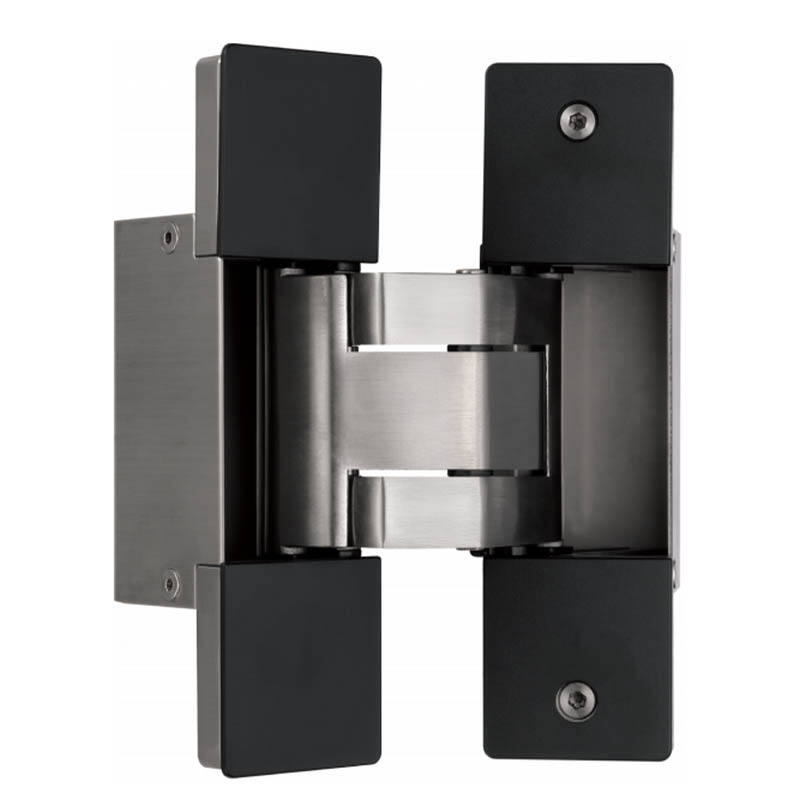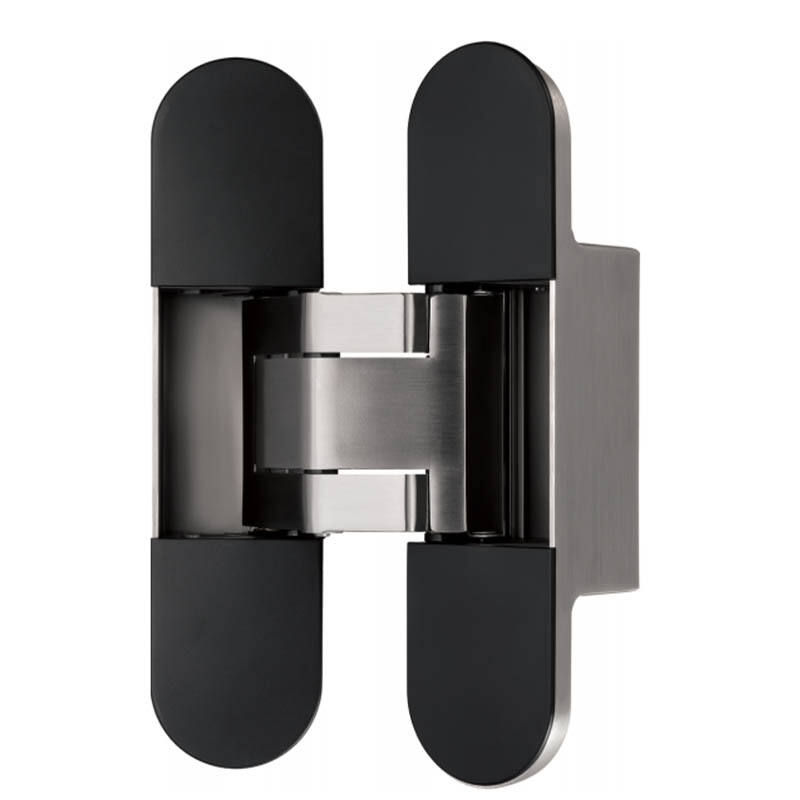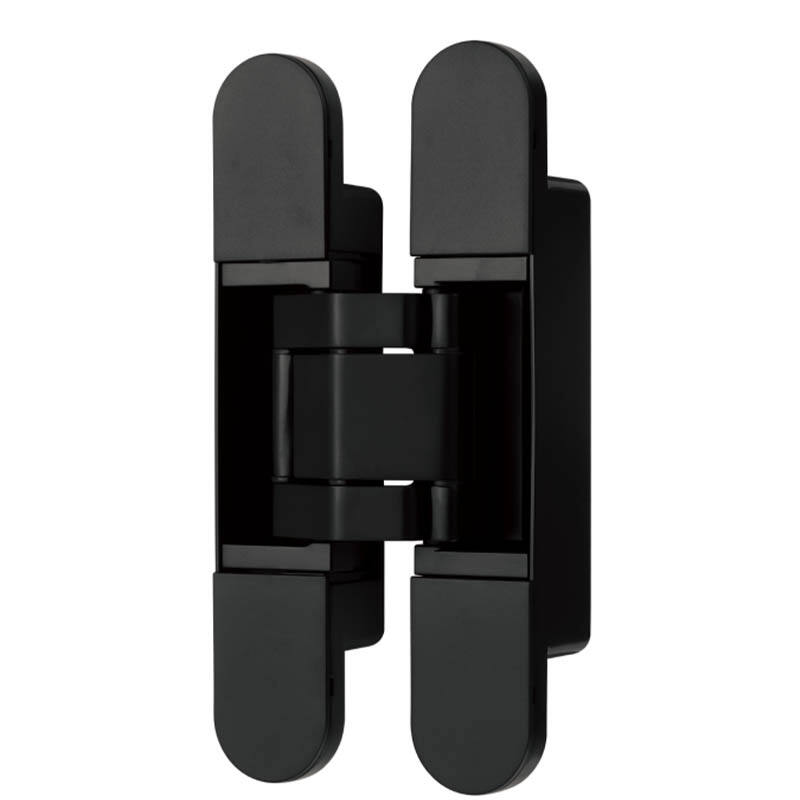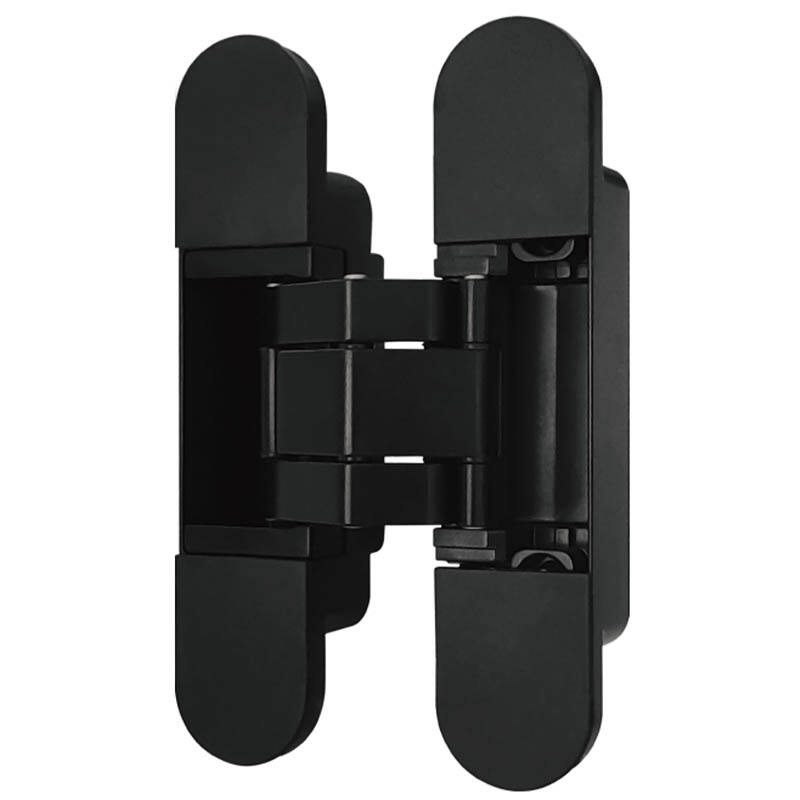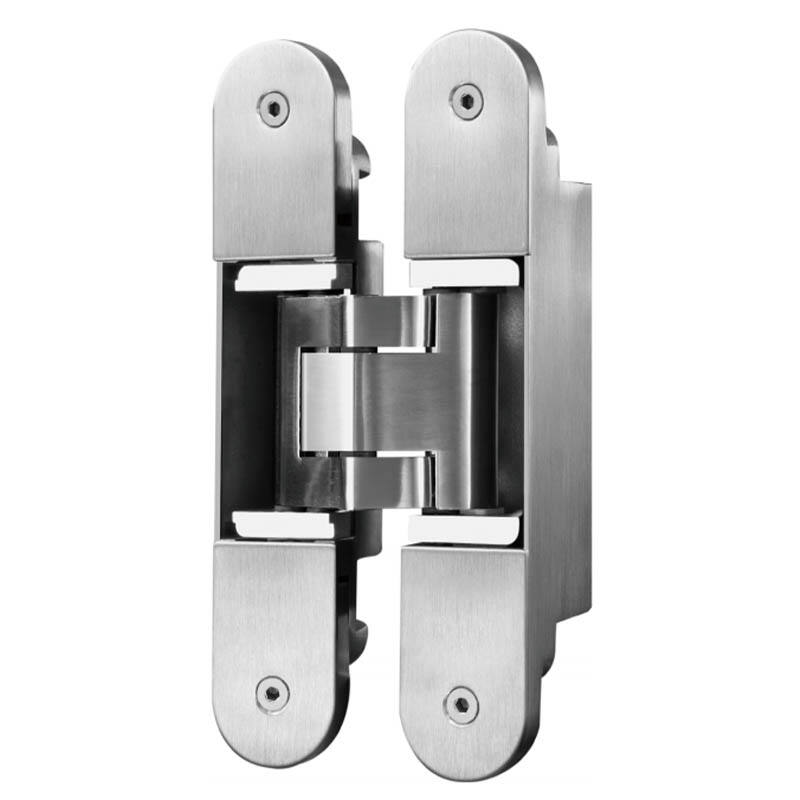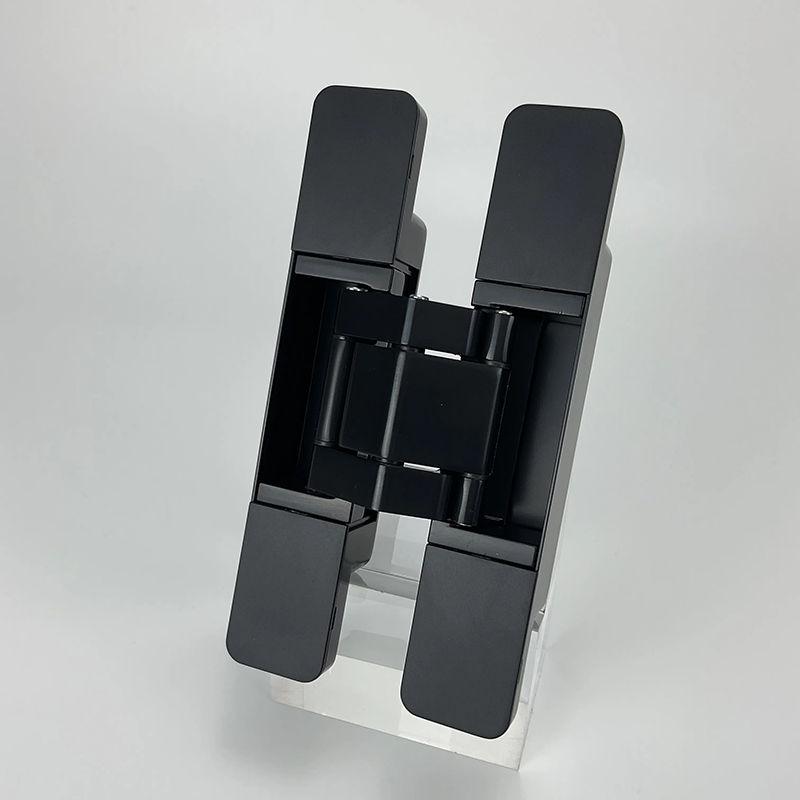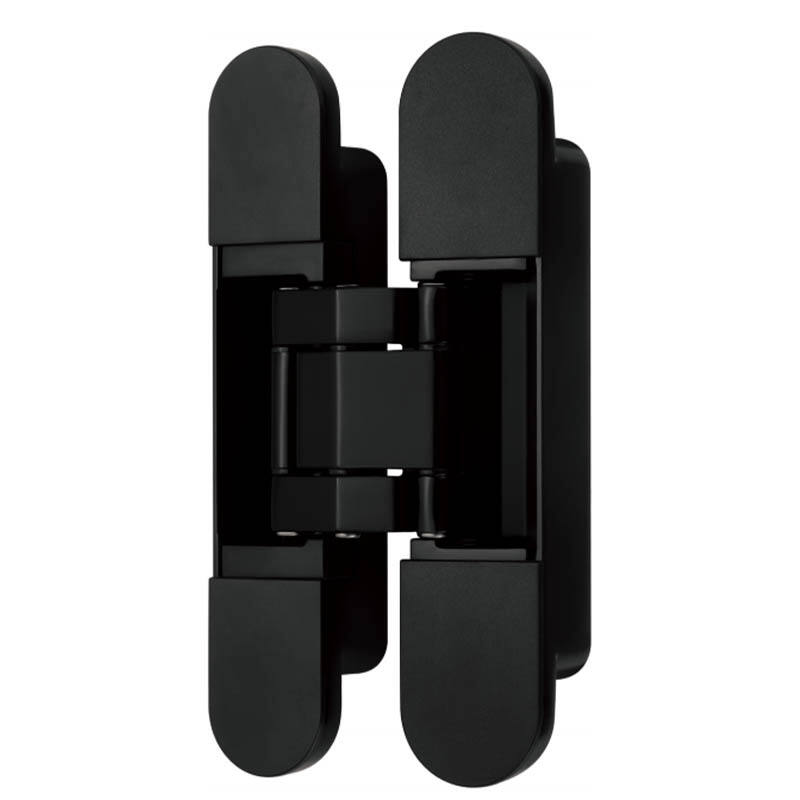Differences and advantages and disadvantages between stainless steel hinges and zinc alloy hinges
Understanding the Materials: Zinc Alloy and Stainless Steel
Zinc alloy hinges are prominent due to their versatile composition, combining zinc with elements like aluminum, magnesium, and copper. Known as ZAMAK alloys, these hinges are robust and cost-effective, commonly used in automotive, electrical, and hardware industries. Their ability to form complex shapes under high-pressure casting processes makes them ideal for high-volume production. Additionally, the natural formation of a zinc carbonate layer provides corrosion resistance, an invaluable trait for outdoor equipment and applications where higher durability at a lower cost is essential.
On the other hand, stainless steel hinges are acclaimed for their exceptional resistance to corrosion. Comprised primarily of iron and at least 10.5% chromium, stainless steel forms a protective layer of chromium oxide, preventing rust and deterioration. This makes them indispensable in construction and architectural applications, where enduring exposure to moisture and environmental factors is commonplace. Additionally, stainless steel's aesthetic appeal and strength make it a preferred choice for both indoor and outdoor structural components where long-lasting performance is critical.
Advantages of Stainless Steel Hinges
Stainless steel hinges offer exceptional corrosion resistance and durability, making them a preferred choice in diverse environments. Studies have shown that stainless steel can last up to 100 years without substantial degradation when exposed to typical atmospheric conditions. This impressive lifespan is attributed to the chromium content in stainless steel, which forms a passive layer that prevents corrosion. In environments where exposure to moisture and salts is a concern, such as coastal areas, 316-grade marine stainless steel provides even greater resistance than the more commonly used 304-grade.
The strength and load-bearing capacity of stainless steel hinges also contribute to their widespread adoption across various industries. According to engineering standards, these hinges can support significant loads while maintaining structural integrity. For example, heavy-duty hidden hinges made from stainless steel are capable of bearing weights exceeding 200 pounds, a critical feature for applications requiring robust support.
The versatility of stainless steel hinges extends their applicability across multiple sectors, including construction, automotive, and marine industries. In construction, they are used in doors and panels that require reliable performance under harsh conditions. The automotive industry benefits from stainless steel hinges for their resilience and aesthetic appeal, while the marine sector values their resistance to salty and humid environments. Whether it's for concealed adjustable hinges in modern architectural designs or heavy-duty applications requiring substantial strength, stainless steel hinges meet a wide range of functional and aesthetic requirements.
Advantages of Zinc Alloy Hinges
Zinc alloy hinges offer significant cost-effectiveness, particularly when compared to stainless steel counterparts. On average, the cost of zinc alloy hinges is lower due to the less expensive components involved in their production, such as zinc and copper. This makes them an attractive option for projects where budget constraints are a concern. For instance, the price of zinc alloy hinges can be up to 30% lower than stainless steel ones, providing a financially savvy alternative without compromising functionality.
One of the key benefits of zinc alloy hinges is their lightweight nature, which contributes to easier installation and reduced operational weight. This is particularly advantageous in applications where weight considerations are crucial, such as in portable structures or lightweight cabinetry. The reduced weight not only facilitates handling during installation but also decreases the overall load on structures, thereby enhancing longevity and reducing wear.
Moreover, zinc alloy hinges boast design flexibility, which allows for a wide range of customizations to fit various architectural styles. Their ability to be molded into intricate shapes and designs makes them a popular choice in modern architecture where aesthetic appeal is paramount. This flexibility is coupled with zinc's natural resistance to corrosion, ensuring that even the most elaborate designs maintain their appearance and function over time.
Disadvantages of Stainless Steel Hinges
One of the primary disadvantages of stainless steel hinges is their higher initial cost when compared to alternatives like zinc alloy hinges. This is due to both the high material costs and the labor expenses involved in manufacturing stainless steel products. The extensive preparation process and use of high-quality, corrosion-resistant materials make stainless steel hinges more expensive. Consequently, these costs can be a significant consideration for budget-conscious projects, particularly where multiple hinges are required.
Another drawback of stainless steel hinges is their susceptibility to scratches, which can detract from their aesthetic appeal. Despite stainless steel being known for its durability, its surface can still show visible imperfections over time, especially in high-traffic areas. Preventive measures, such as applying protective coatings or using specialized cleaning products, can help minimize this issue, maintaining both the appearance and functionality of stainless steel hinges. Regular maintenance becomes key to preserving the clean and sleek look of these hinges in environments where aesthetics are paramount.
Disadvantages of Zinc Alloy Hinges
Zinc alloy hinges, despite their cost-effectiveness, lack the strength of stainless steel alternatives. Specifically, zinc alloys have a lower tensile strength, typically around 200-400 N/mm², compared to stainless steel, which offers a tensile strength of 520-750 N/mm². This difference means that zinc alloy hinges can be less durable under heavy loads, thus limiting their use in heavy-duty applications where invisible hinges or heavy duty hidden hinges might be required.
Moreover, zinc alloy hinges are susceptible to corrosion in certain environments, particularly those with high humidity. Environmental data indicates that zinc alloys can begin to corrode more rapidly in moist air due to the formation of zinc oxide. This tendency requires additional protective measures, such as coatings or maintenance routines, to prevent degradation over time. In comparison, concealed door hinges made from stainless steel are better suited for use in challenging environments due to their resistance to corrosion. These factors should be carefully considered when selecting hinges for environments prone to humidity and corrosion.
Comparison: Performance and Applications
When considering hinges for applications demanding high durability, stainless steel hinges are often the top choice. Their exceptional corrosion resistance and strength-to-weight ratio make them ideal for industrial settings, machinery covers, and outdoor installations. Industries like manufacturing and construction often rely on stainless steel hinges for heavy-duty applications where frequent opening and closing occur, as these hinges can withstand extreme wear and environmental conditions.
On the other hand, zinc alloy hinges are more suited for interior applications and furniture, where weight is an essential consideration. These hinges offer a lightweight yet strong alternative, making them perfect for cabinets, interior doors, and pieces of furniture that do not demand the extreme durability required in industrial pathways. This lightweight nature does not compromise their aesthetic appeal, which is another reason zinc alloy continues to be popular in spaces where design is vital.
In conclusion, the choice between stainless steel and zinc alloy hinges depends largely on your specific application needs. Stainless steel is preferable for environments demanding heavy-duty performance and longevity, even in harsh conditions, despite its higher initial cost. Zinc alloy hinges, however, offer a cost-effective, lighter solution for less demanding applications where aesthetics also play a role. Assess your application requirements carefully to determine which hinge provides the most cost-efficient and performance-appropriate solution.
Summary of Advantages and Disadvantages
Stainless steel hinges offer remarkable strength, resistance to corrosion, and suitability for external applications, making them ideal for heavy-duty use. On the other hand, zinc alloy hinges provide a lighter option, suited for indoor applications and furniture due to their weight-efficient design. While stainless steel hinges are more expensive initially, they offer long-term value; zinc alloy hinges are more budget-friendly but may require more frequent replacement.
Recommended Products
Hot News
-
Hidden Hinges: The Invisible Solution for Seamless Design
2024-11-08
-
The Advantages of Alloy Concealed Hinges in Modern Architecture
2024-11-04
-
Shedding water in the big river, struggling to break the waves----Jibang Group's 2024-2026 business goals and 2024 annual business plan meeting was successfully held
2024-01-22
-
The wind is strong and the sails are sailing. It is the right time to work hard.
2024-01-22
-
The company established a special project team and discussed different technical issues with foreign engineers
2024-01-22
-
Endless Learning Empowers Development -- Establishment of Jibang College and Launching of Guanggong Jiban Metal Materials Class
2024-03-22

 EN
EN
 AR
AR
 HR
HR
 CS
CS
 DA
DA
 NL
NL
 FI
FI
 FR
FR
 DE
DE
 EL
EL
 HI
HI
 IT
IT
 KO
KO
 NO
NO
 PL
PL
 PT
PT
 RO
RO
 RU
RU
 ES
ES
 SV
SV
 TL
TL
 IW
IW
 ID
ID
 LV
LV
 LT
LT
 SR
SR
 SK
SK
 SL
SL
 VI
VI
 SQ
SQ
 ET
ET
 HU
HU
 TH
TH
 TR
TR
 MS
MS
 IS
IS
 LA
LA
 KK
KK
 UZ
UZ
 KY
KY

